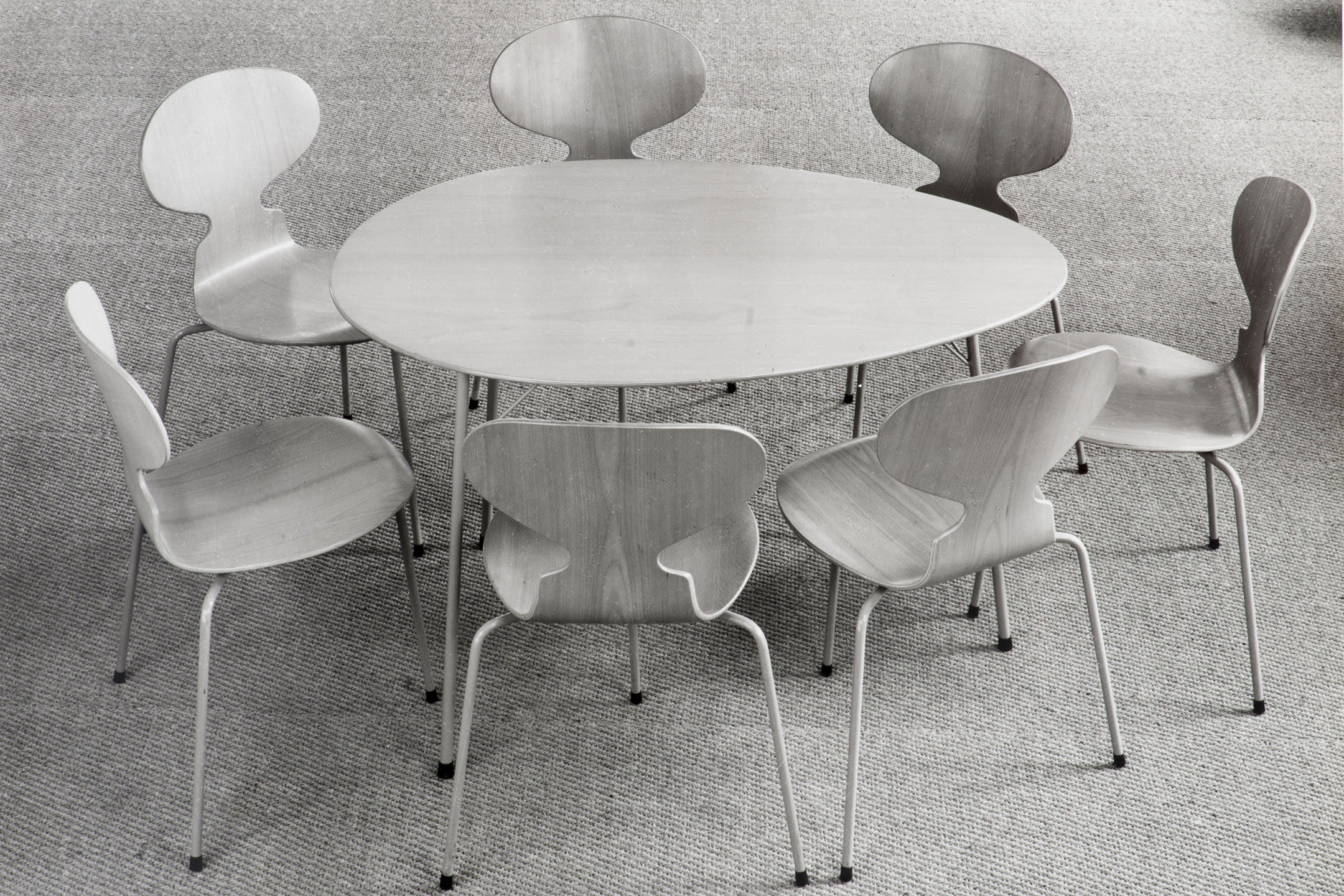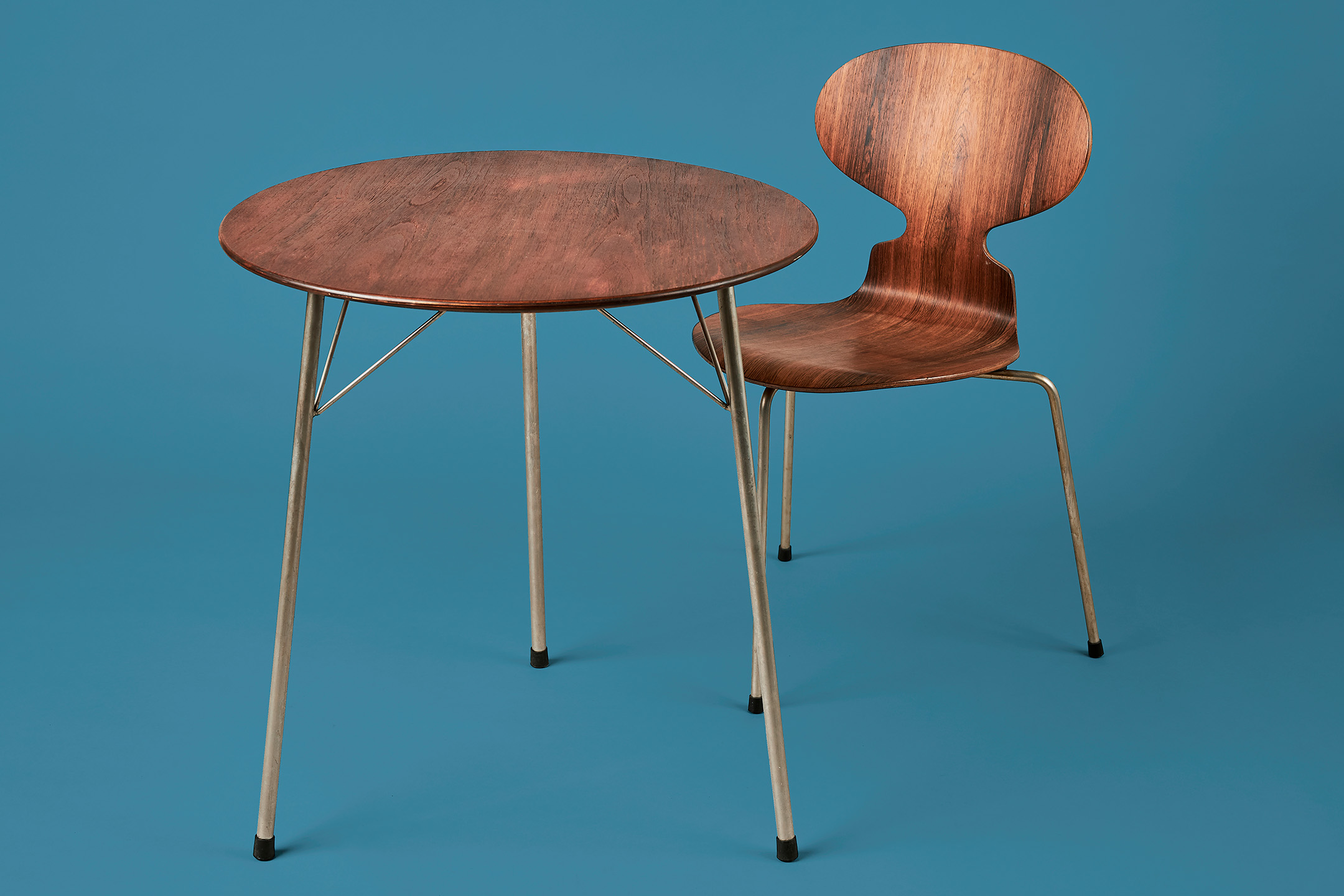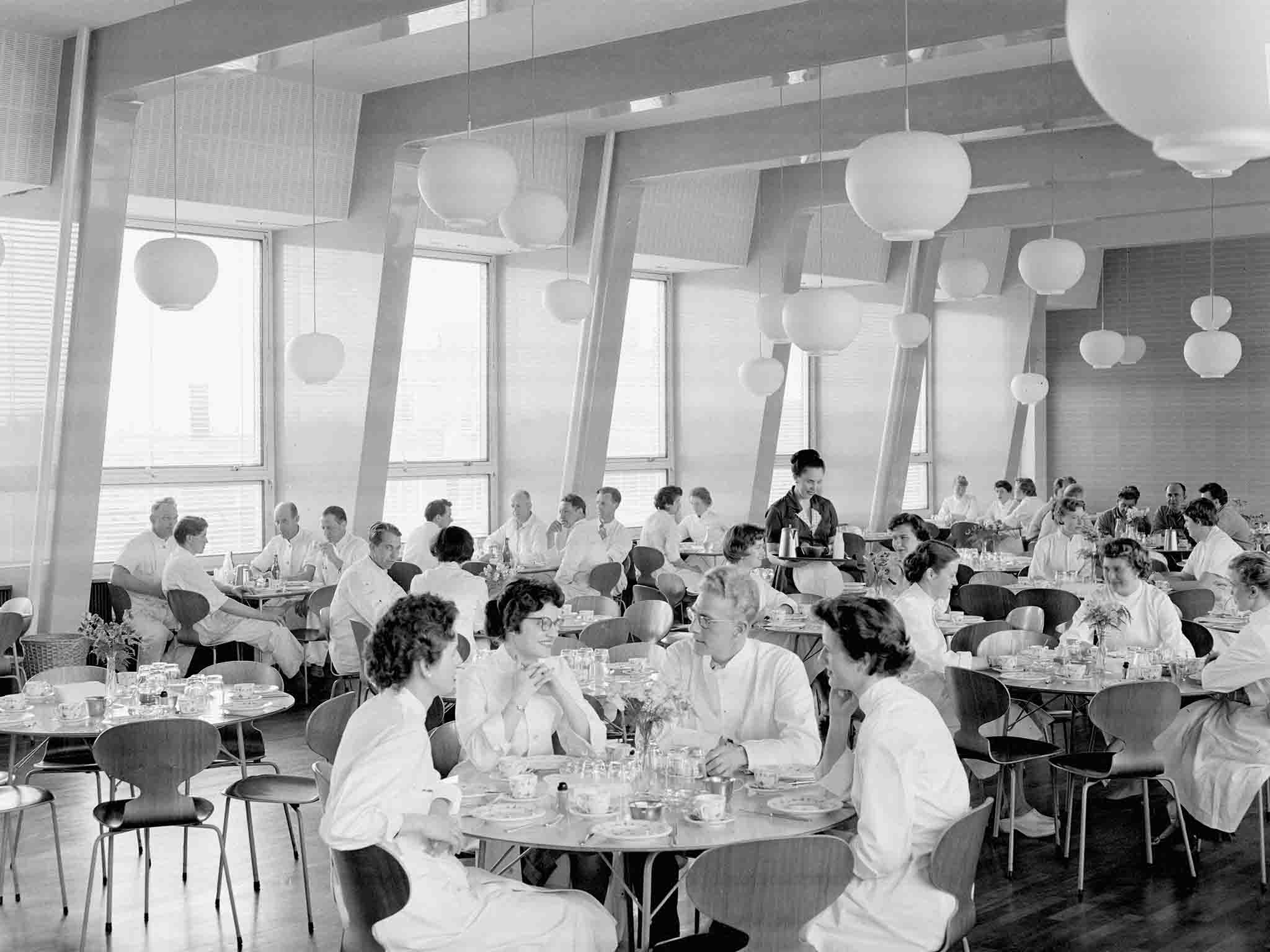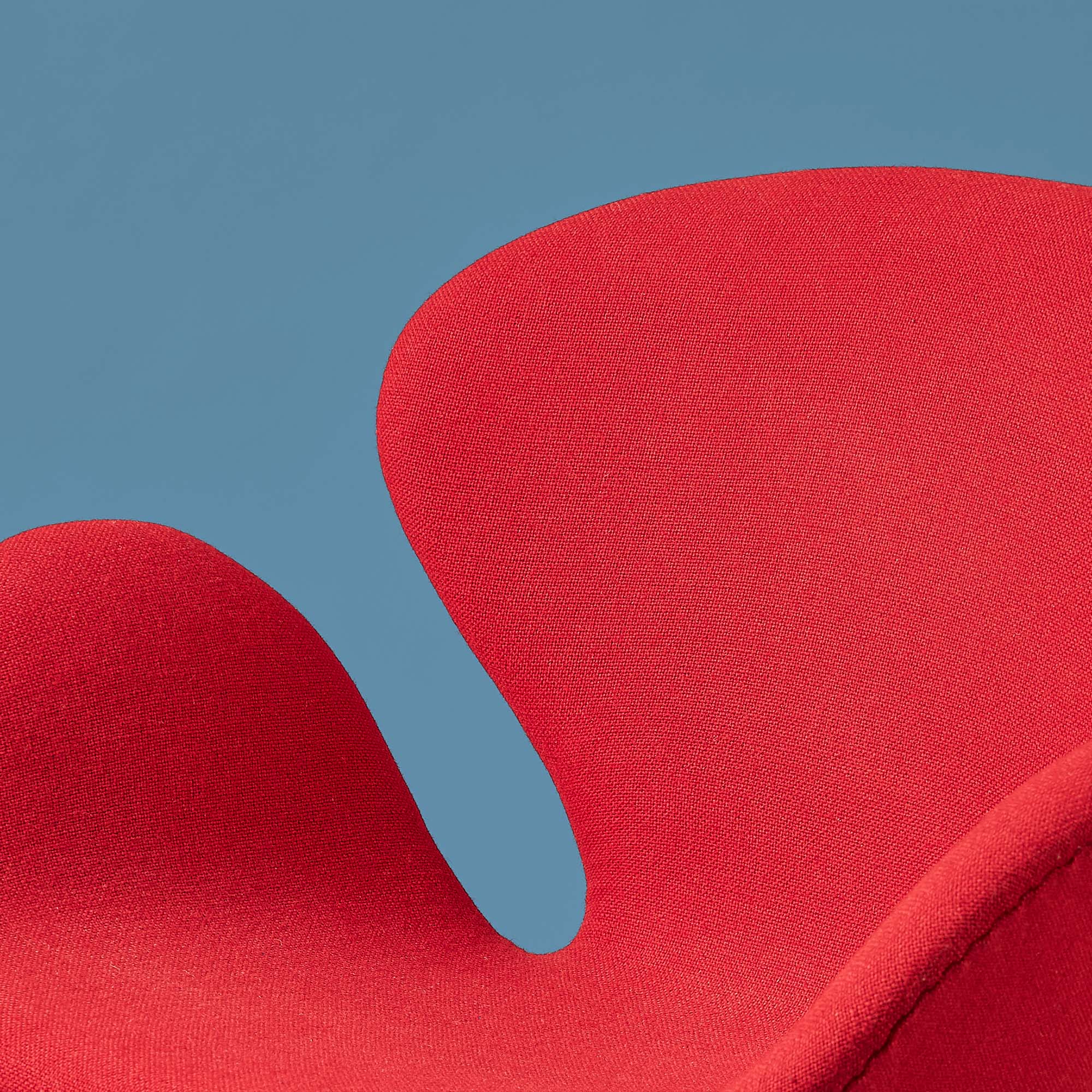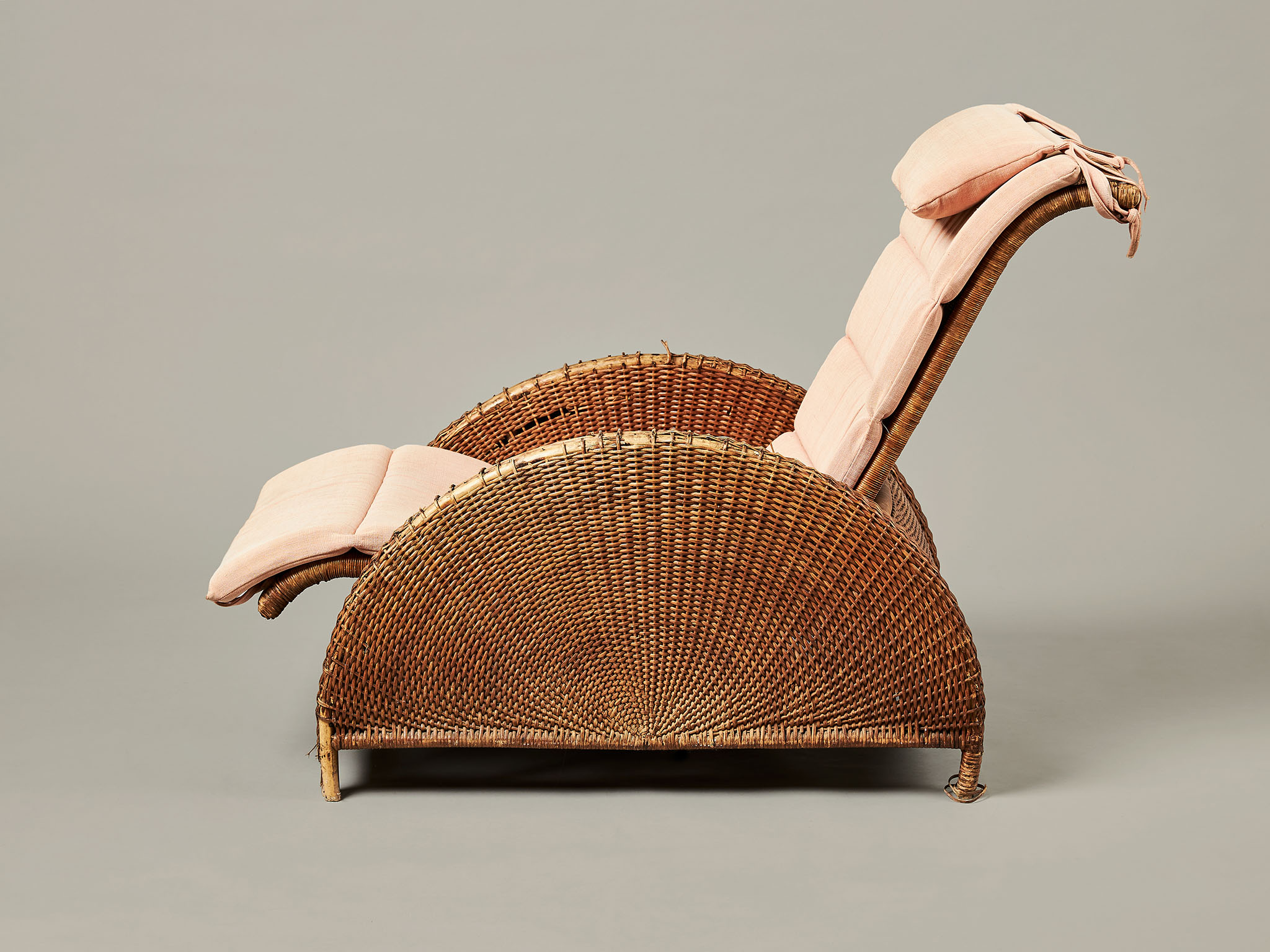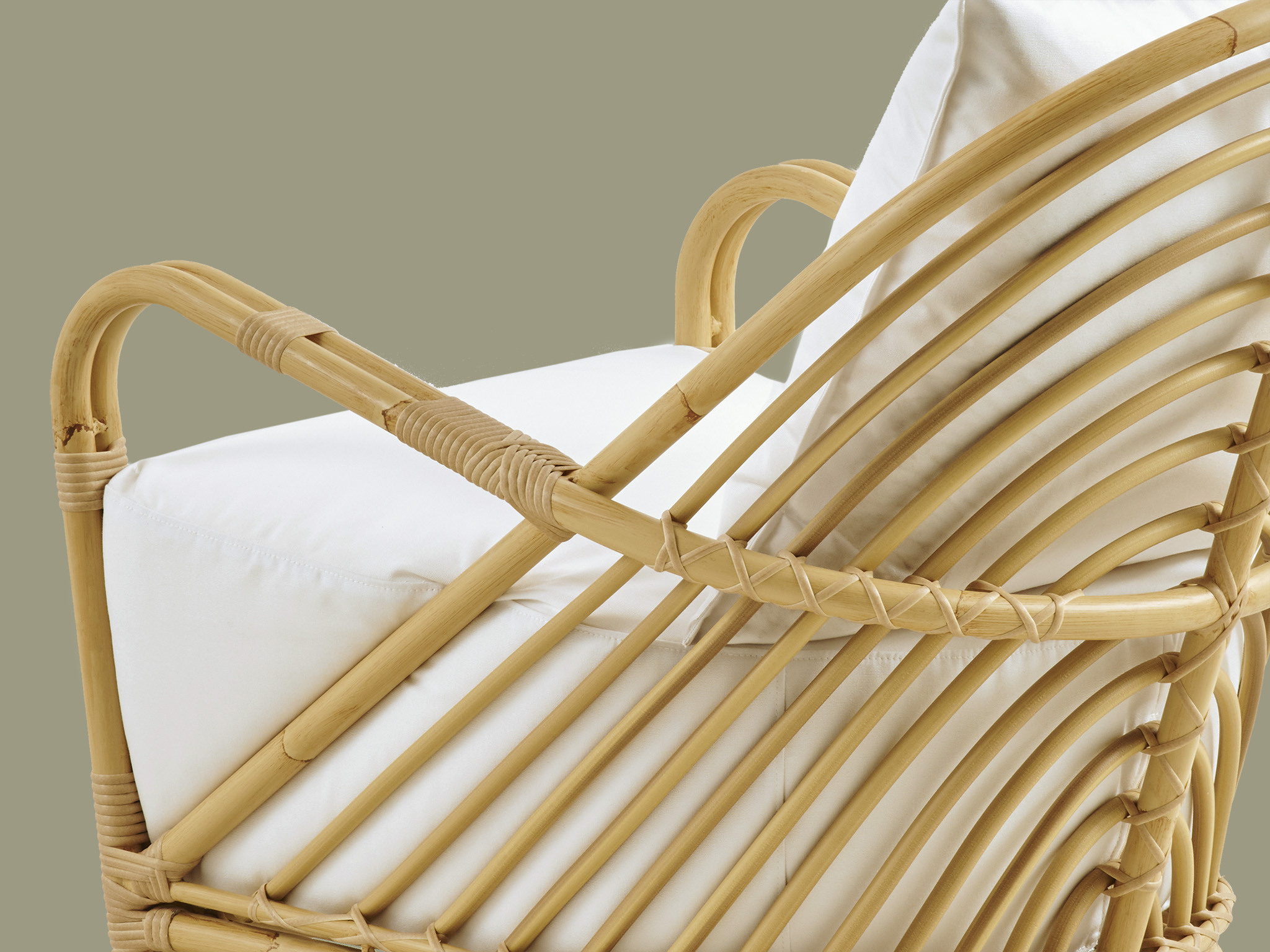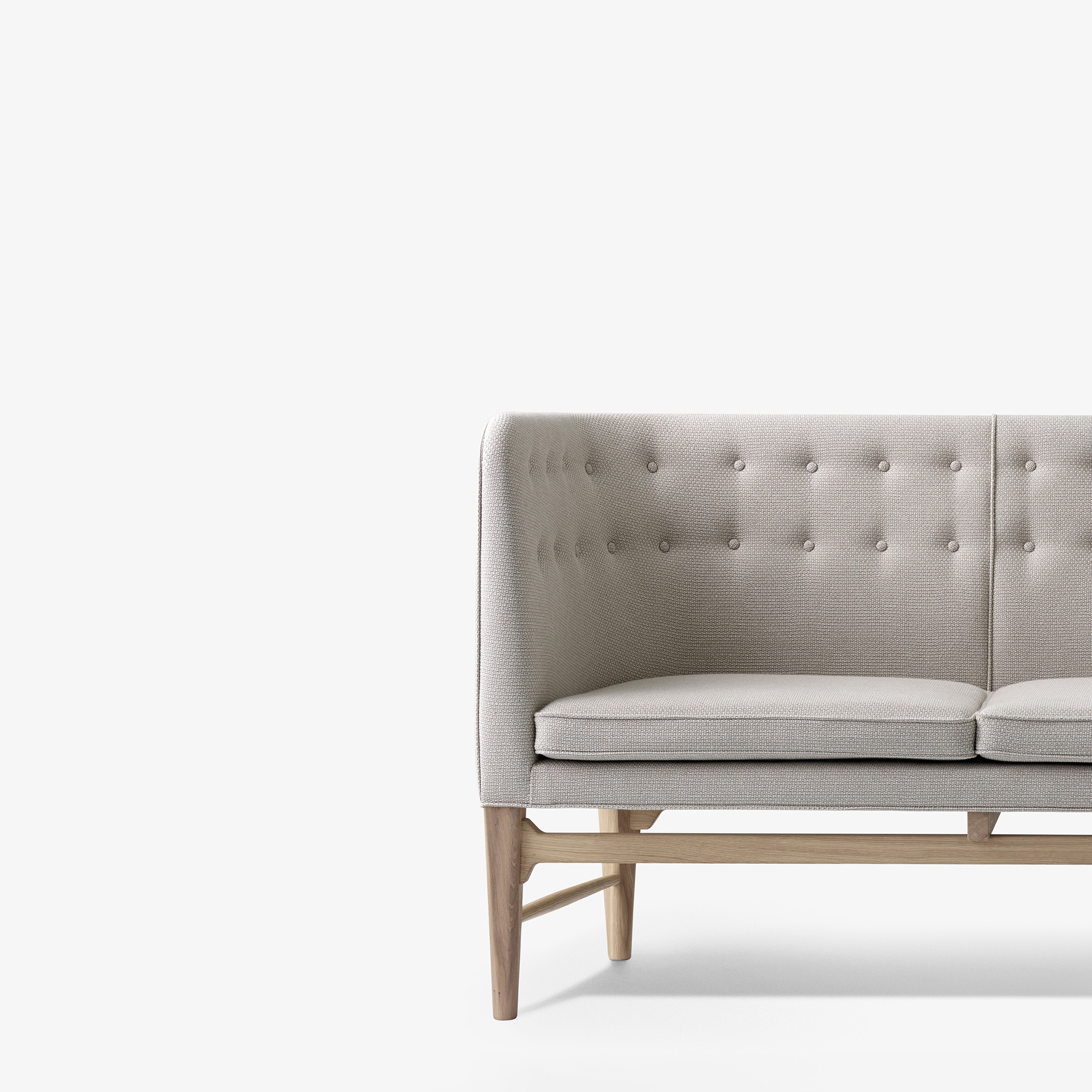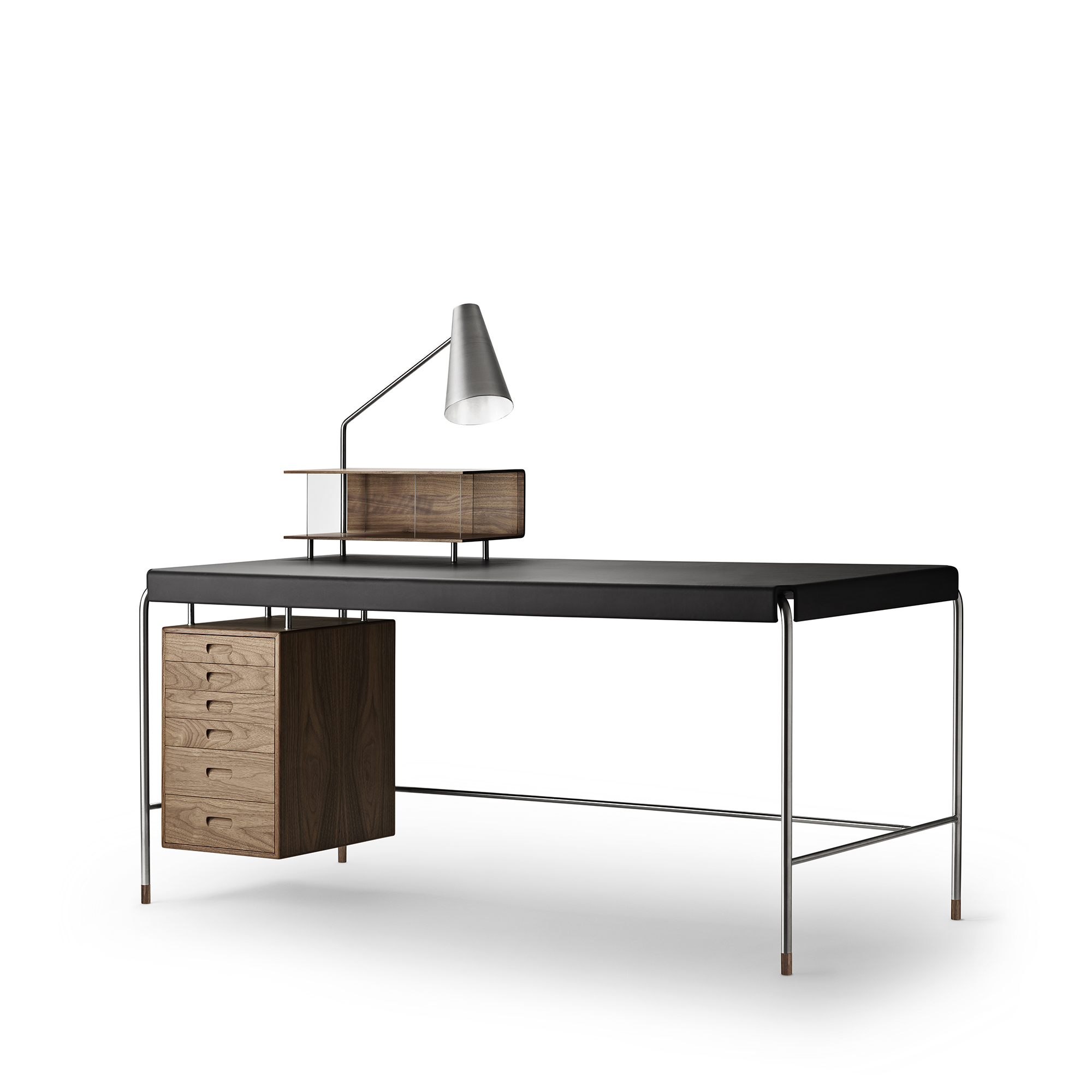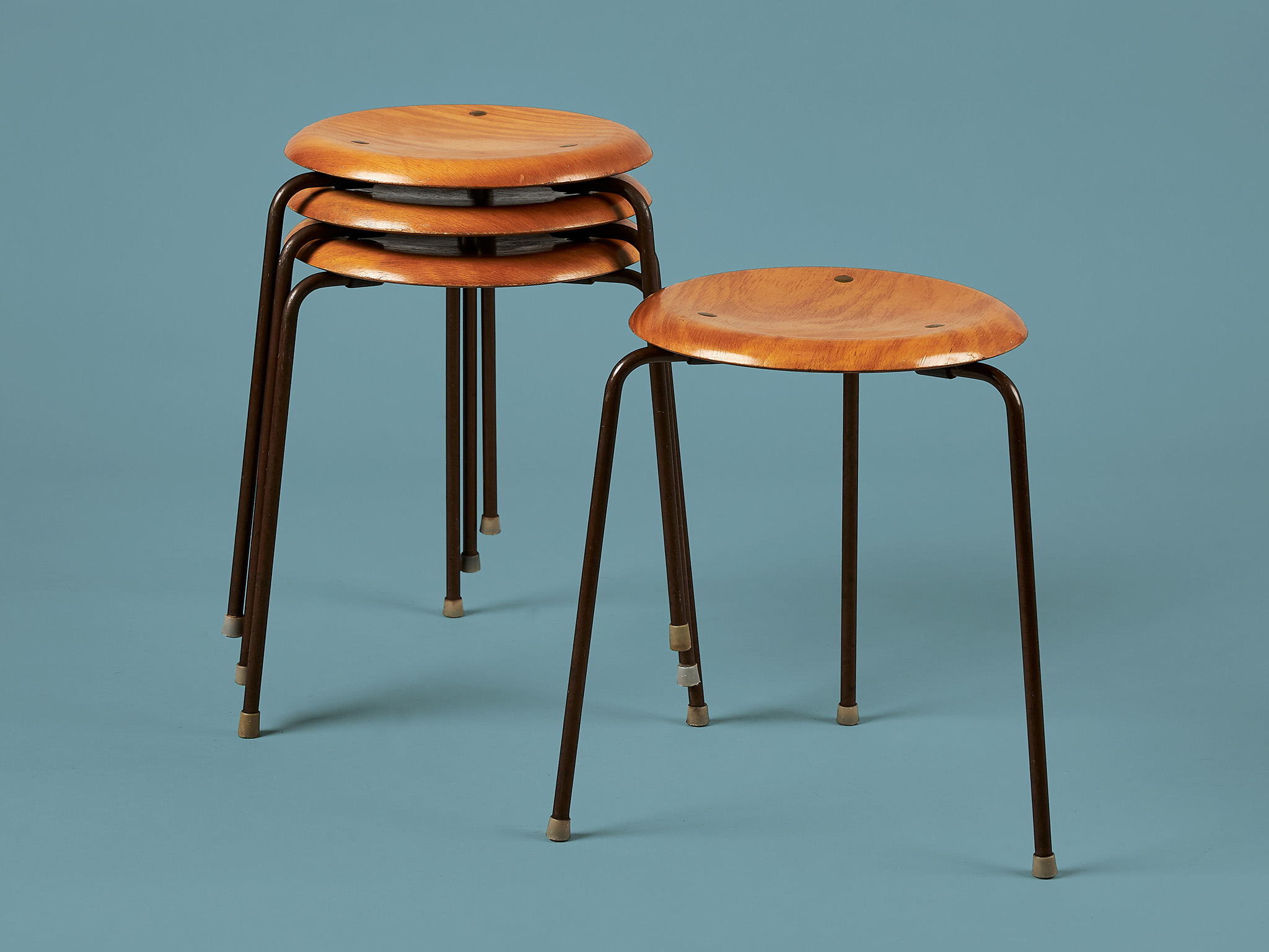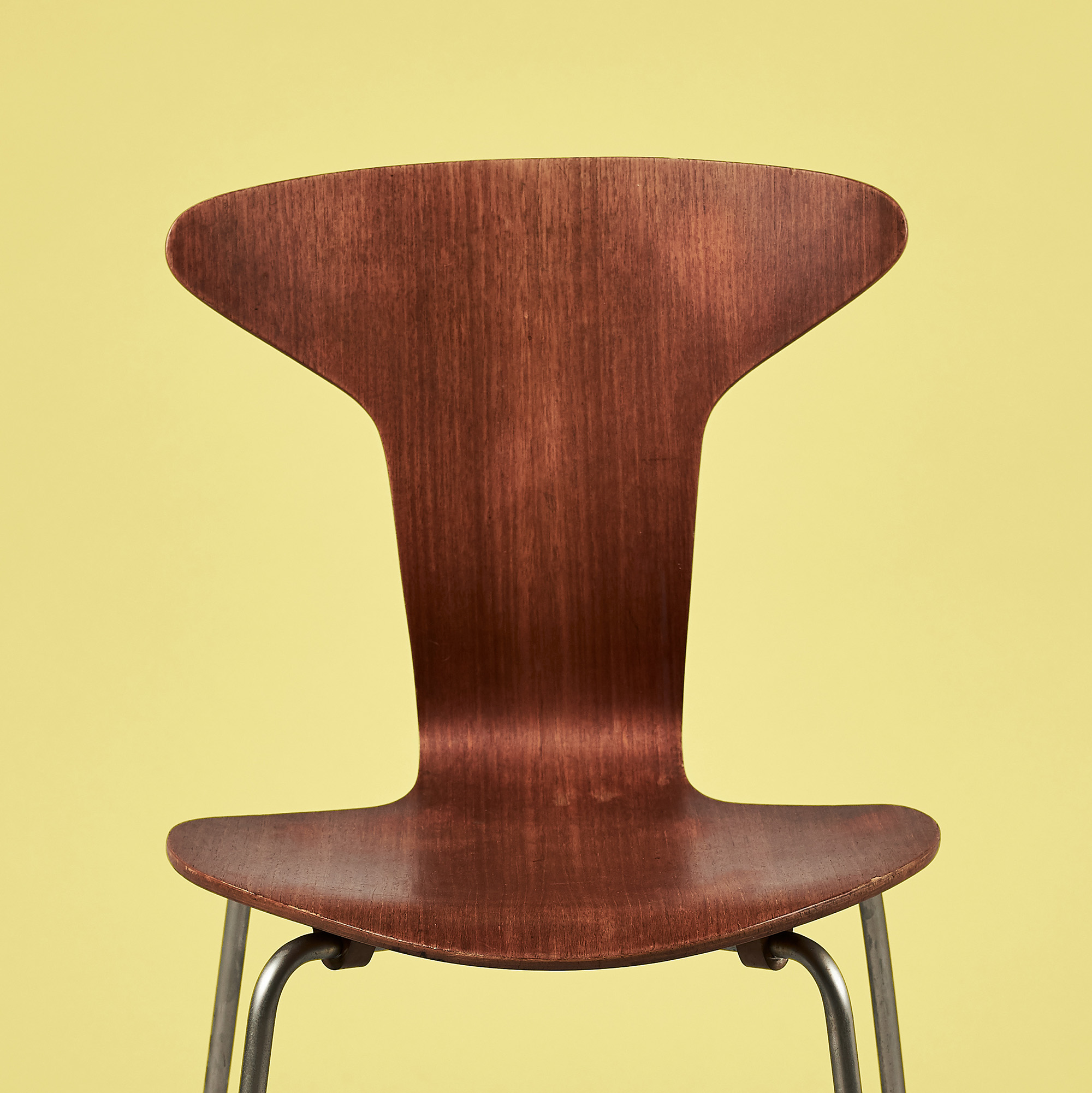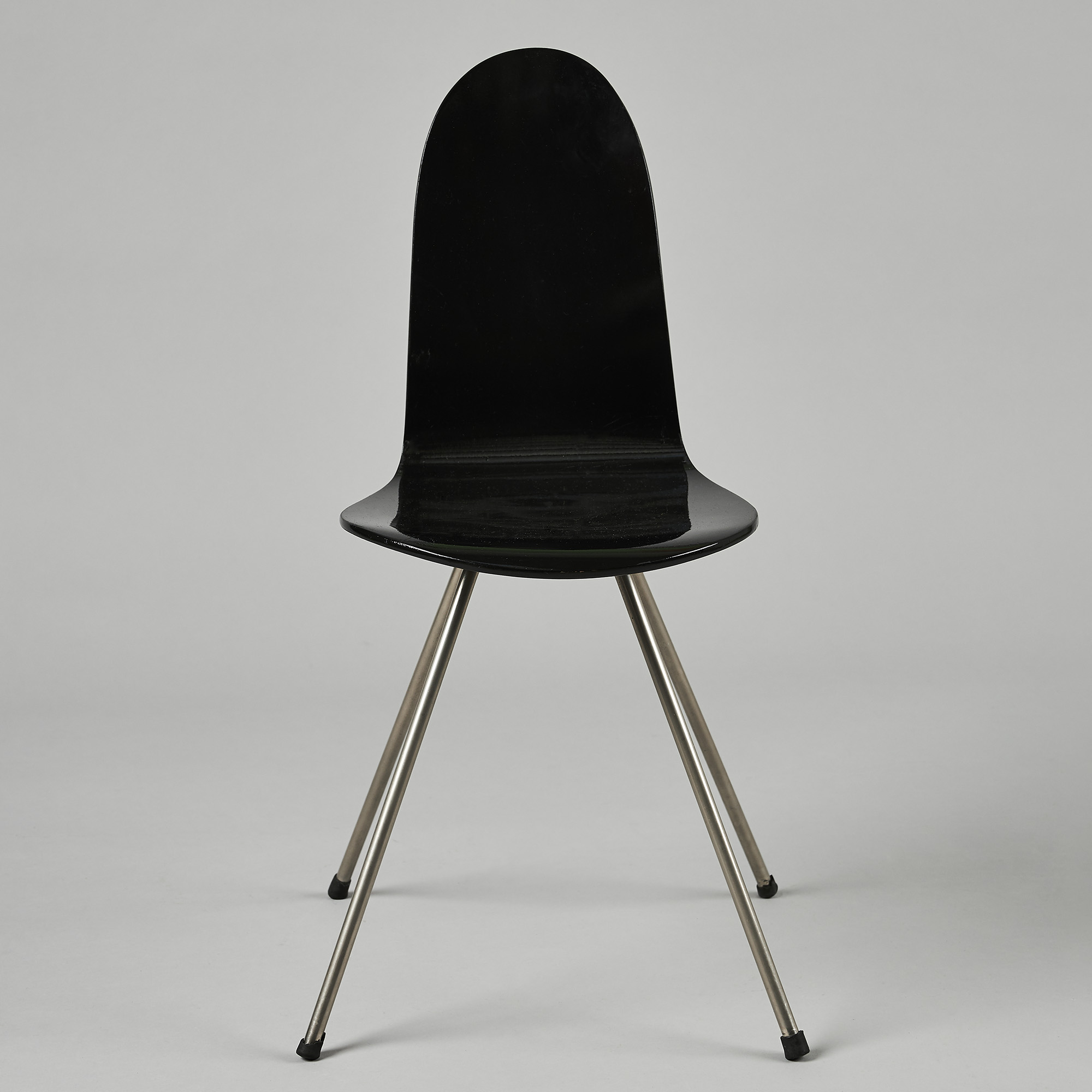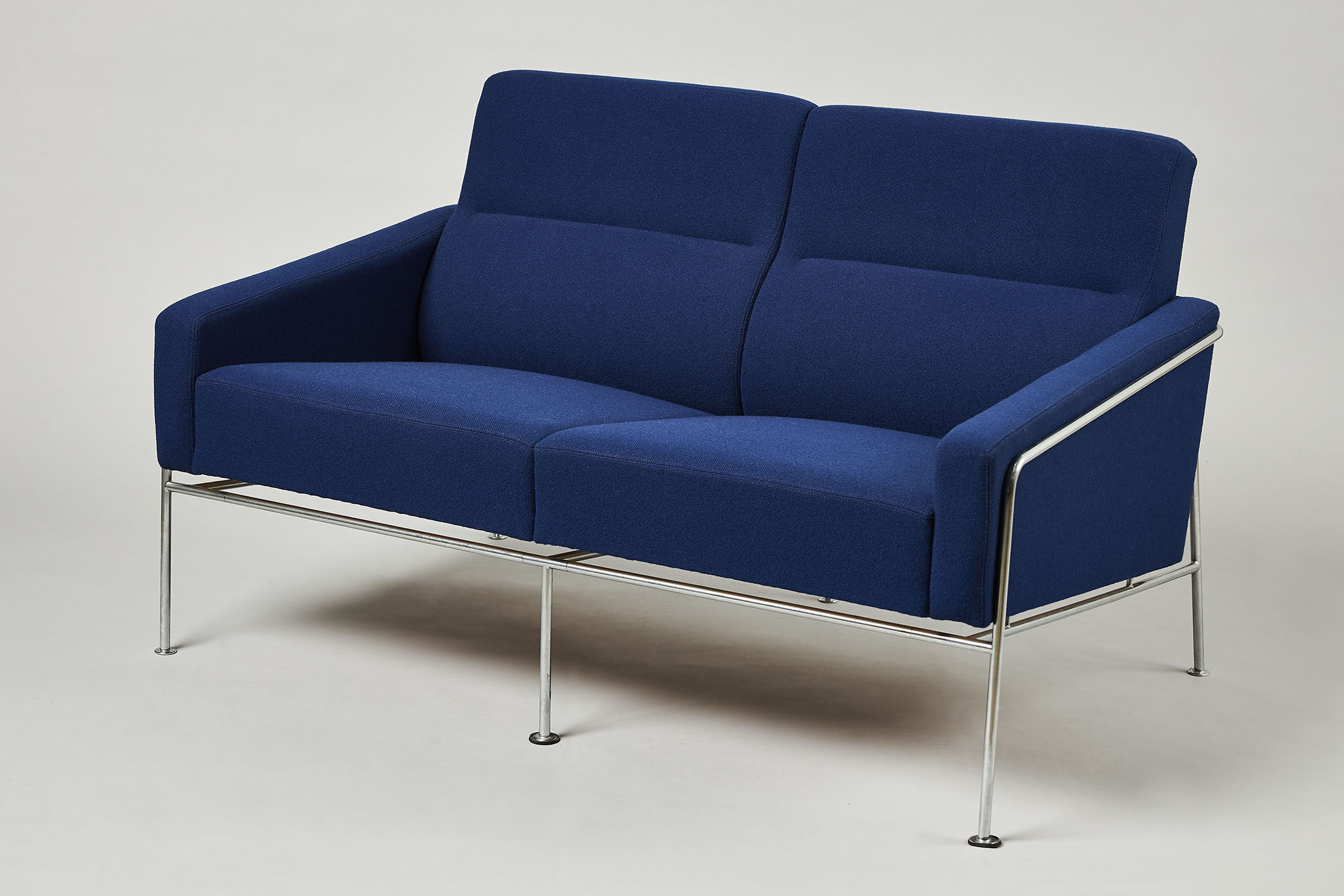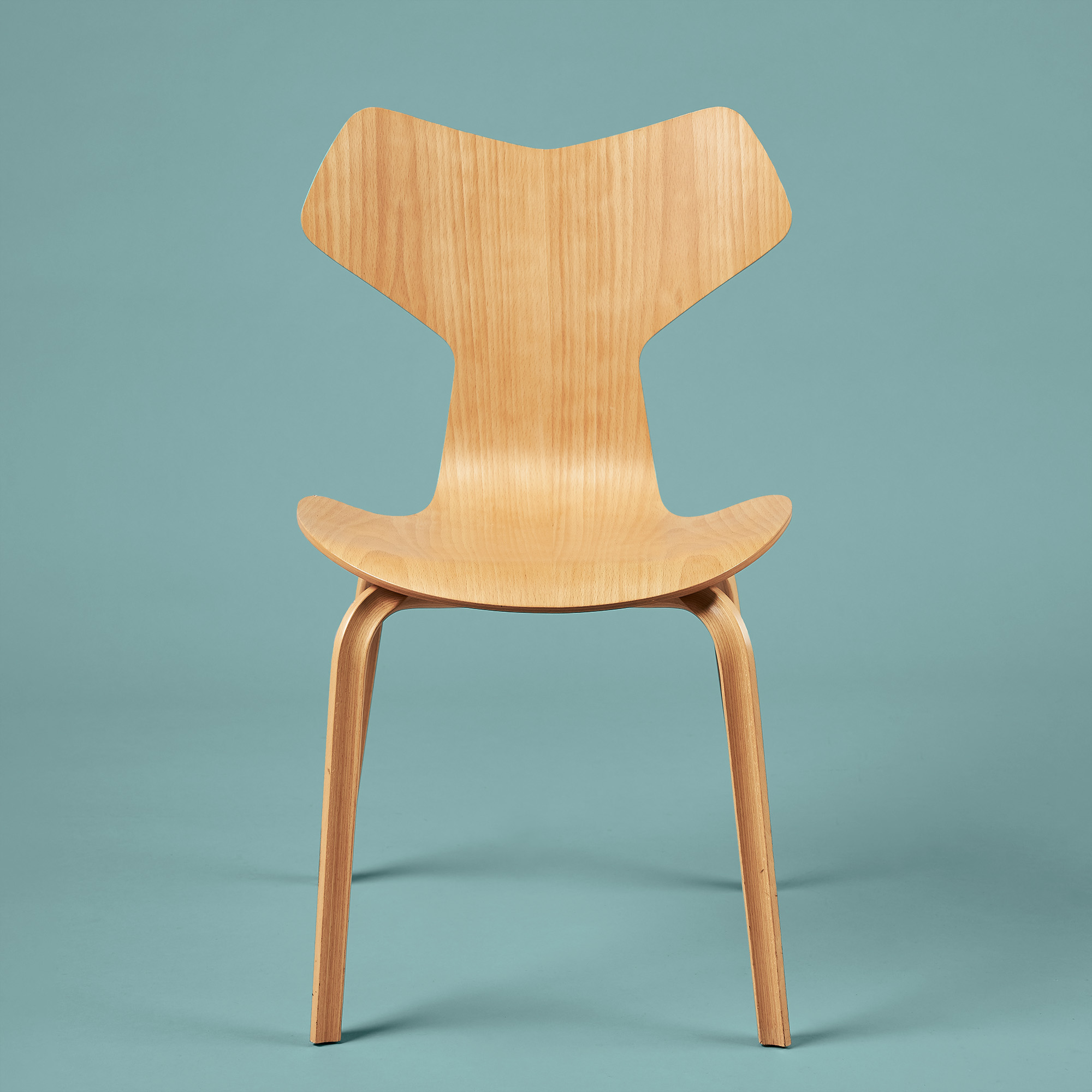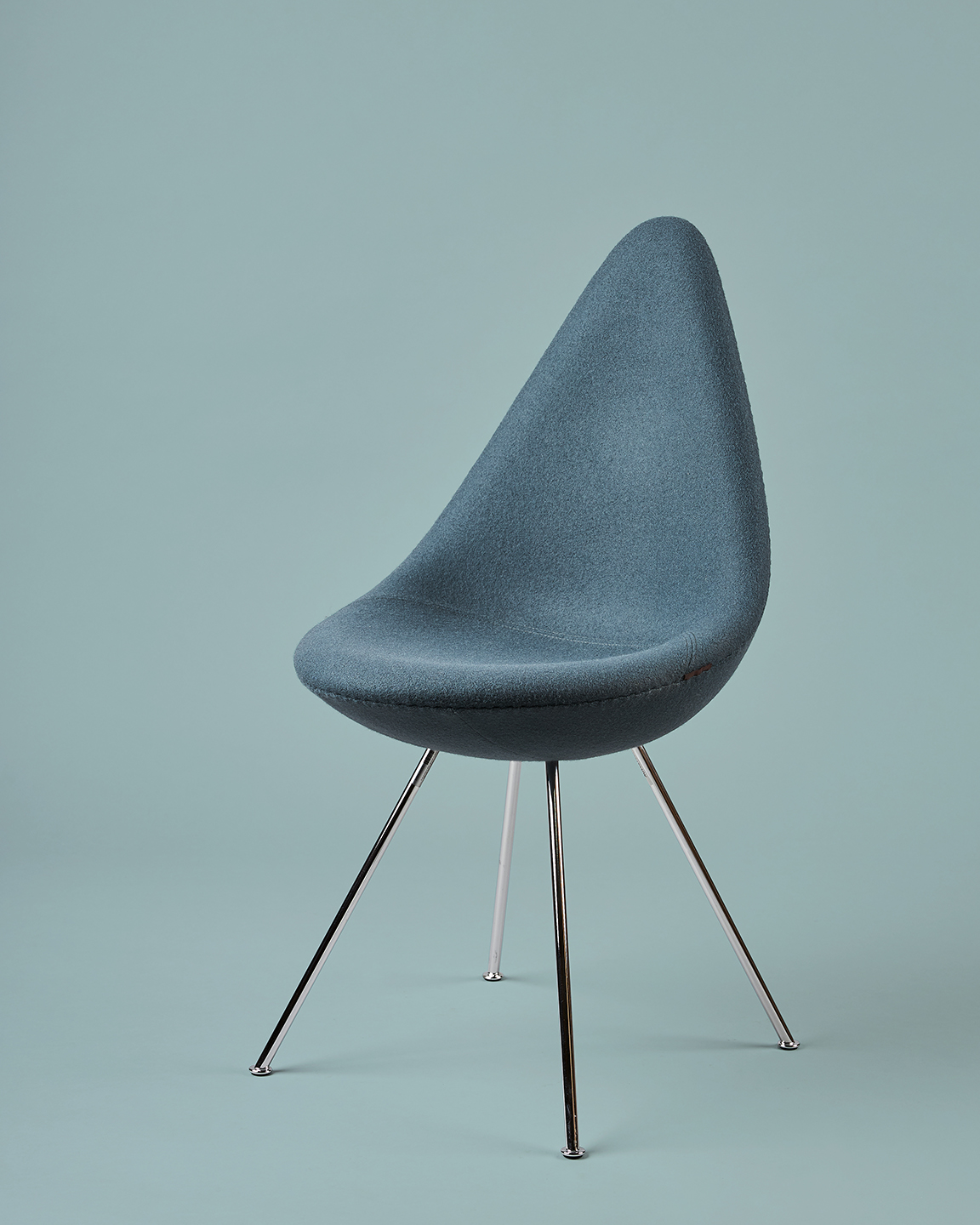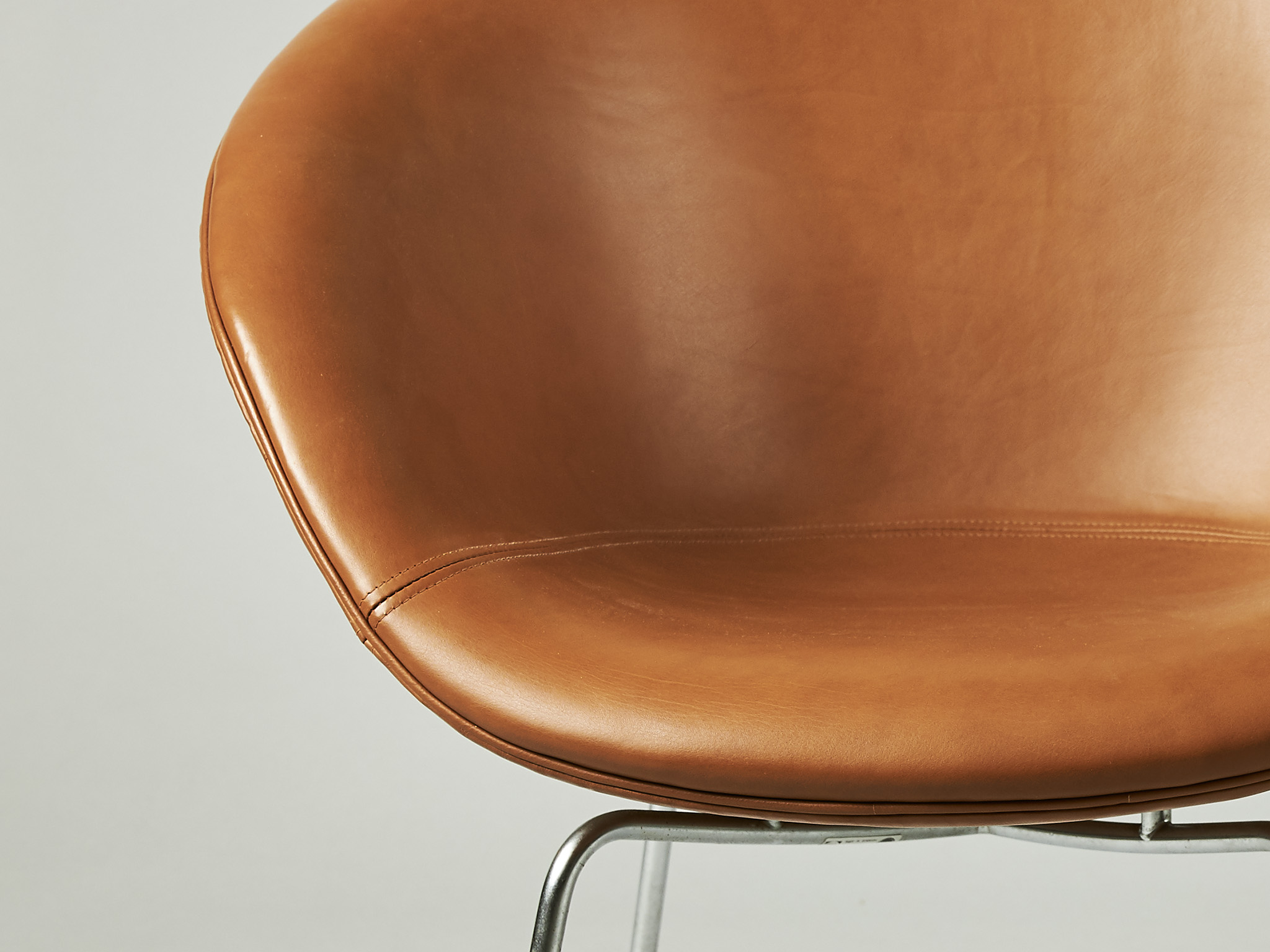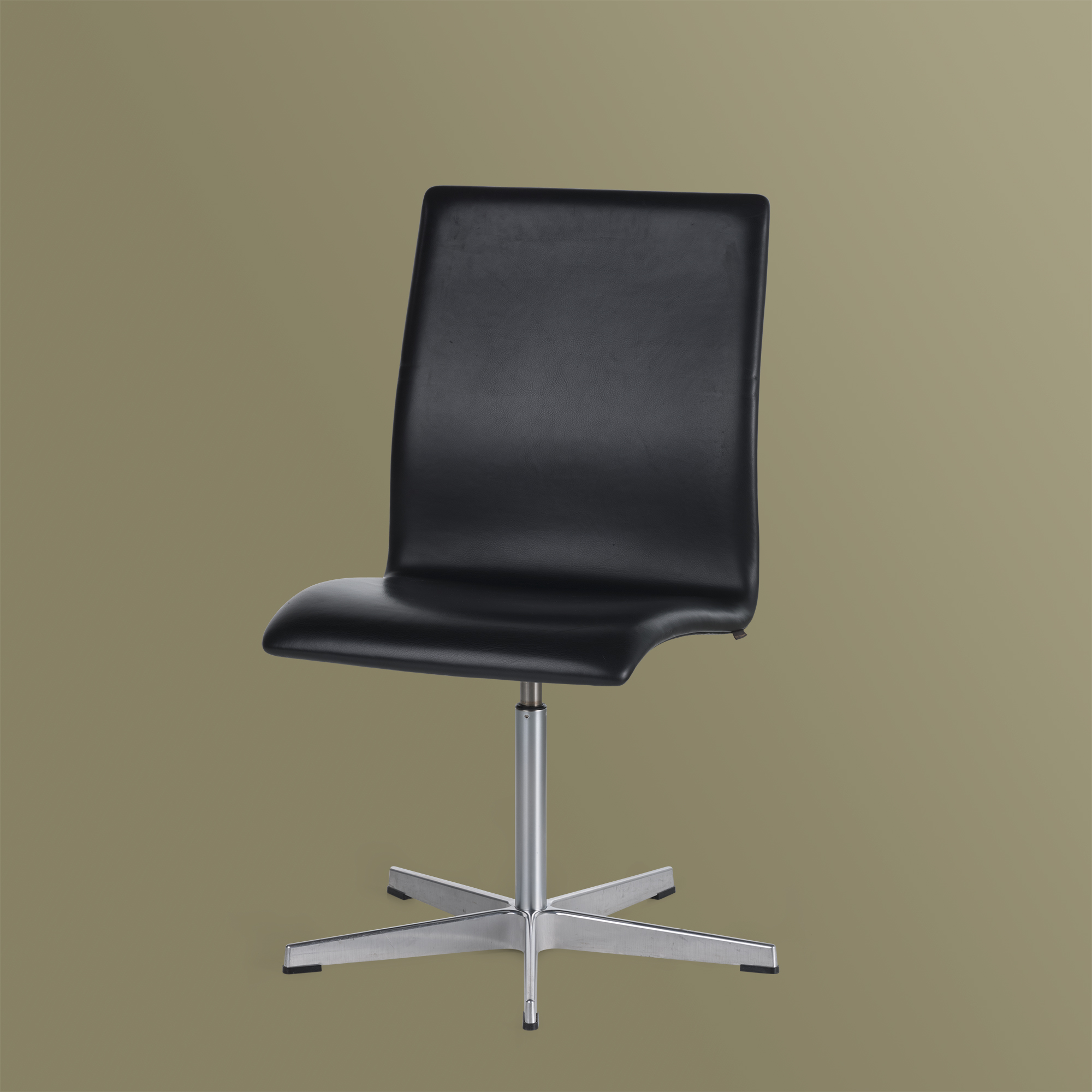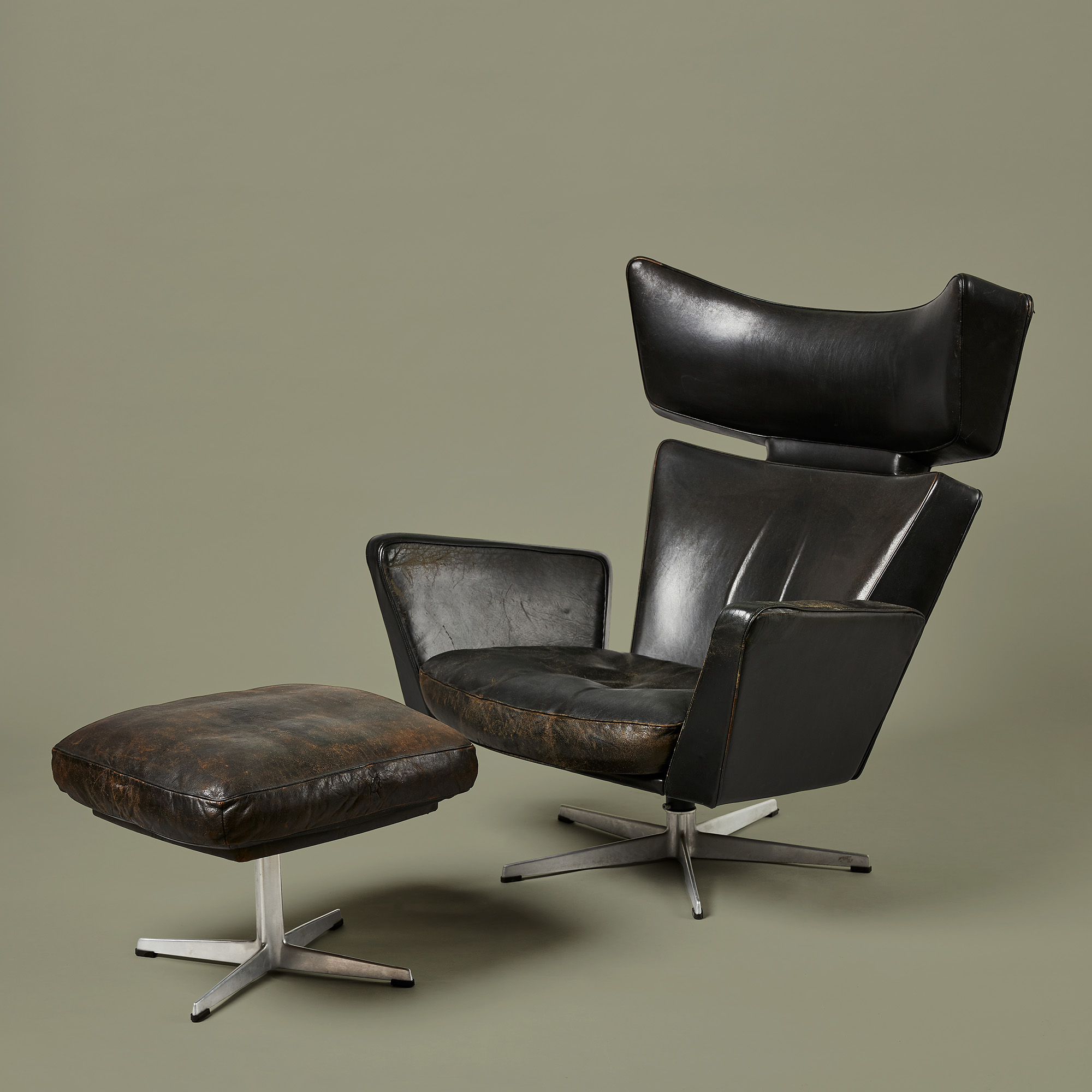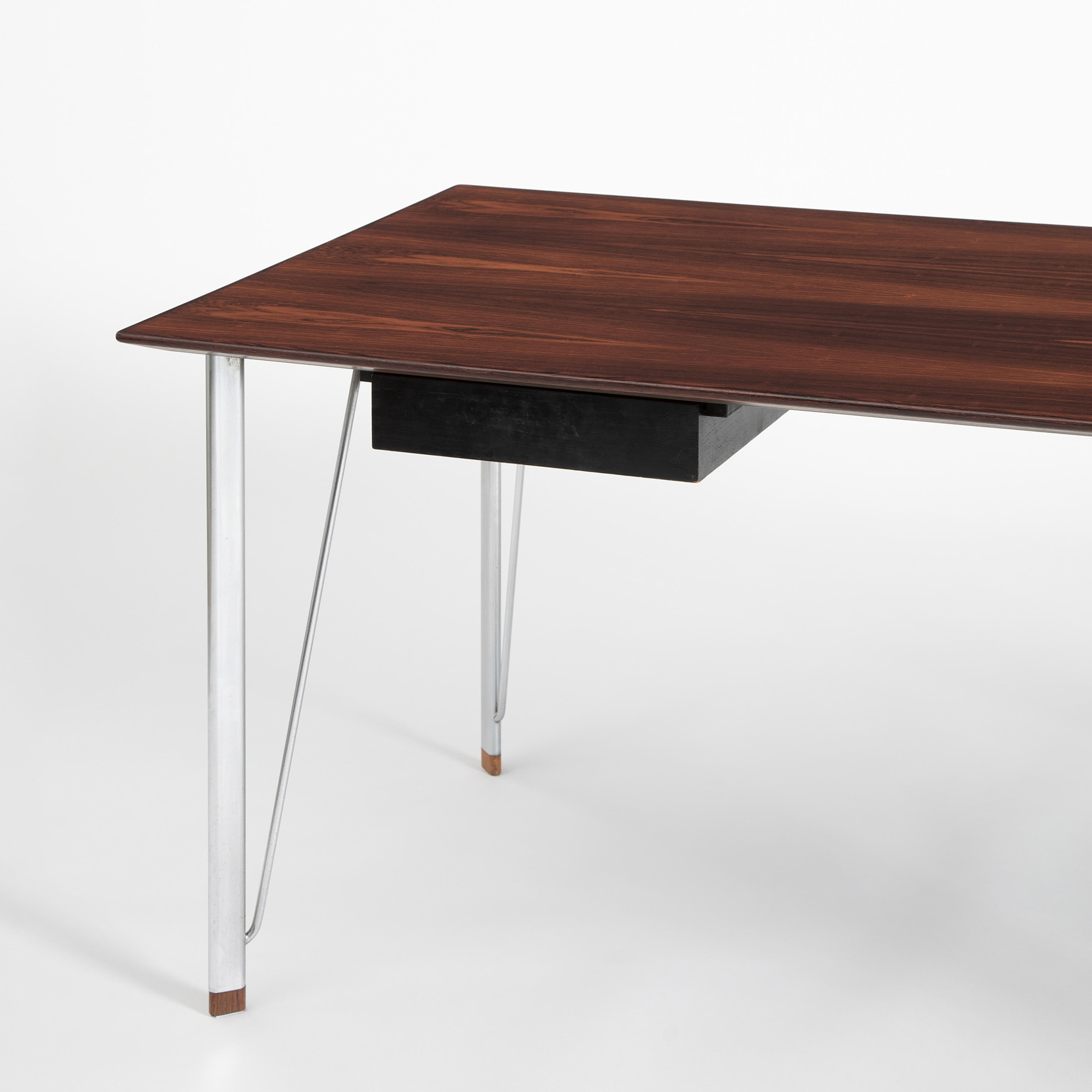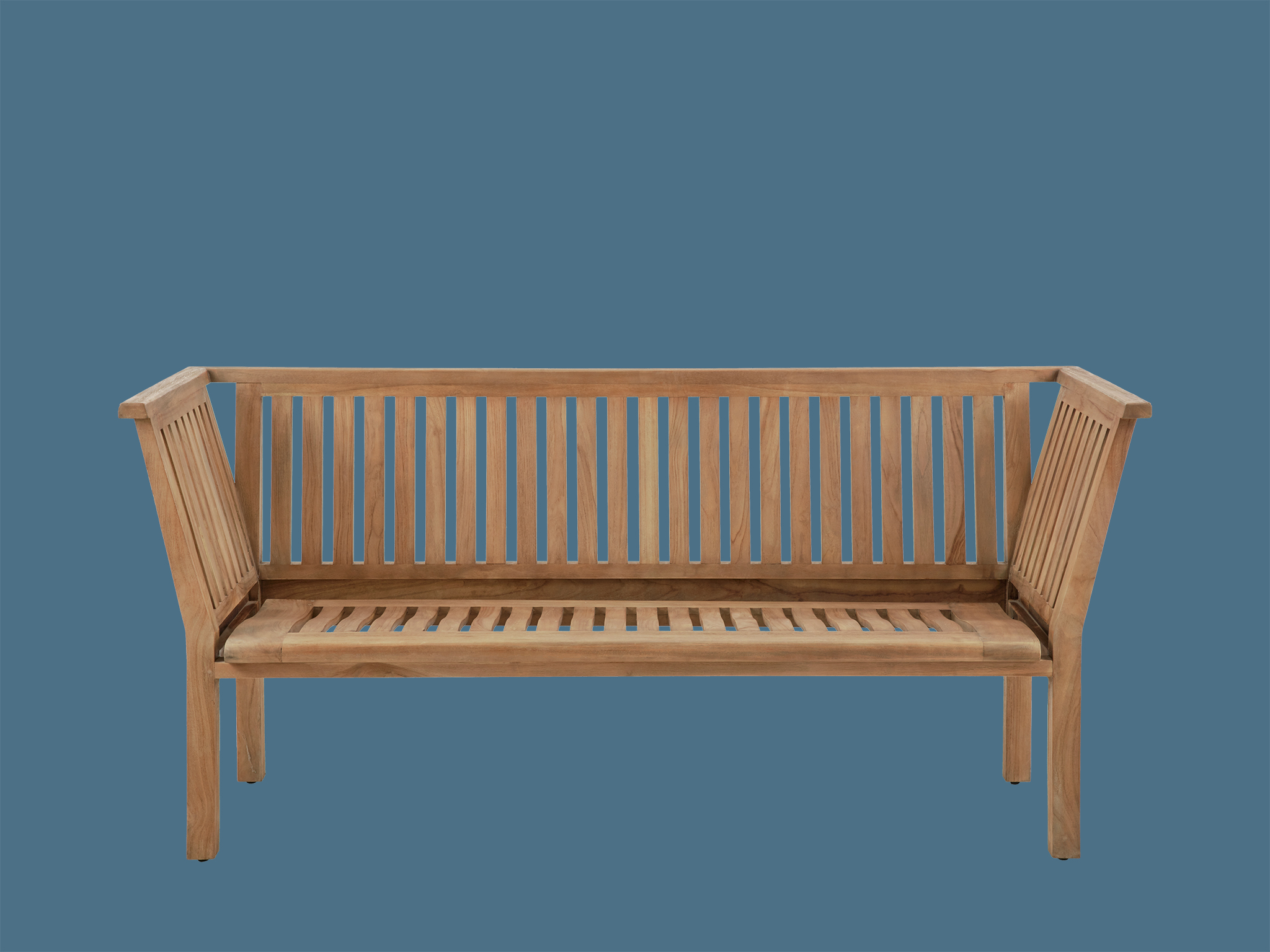The ambition of creating new, functional furniture for the modern home was one that Arne Jacobsen shared with many leading furniture designers at the time, both in Denmark and abroad. In the late 1940s, for example, the American architect couple Charles (1907–1978) and Ray Eames (1912–1988) launched their DTM table and DCM chair that, like Arne Jacobsen’s Ant chair and accompanying tables, utilized the properties of plywood to make small, lightweight, sturdy furniture. Like the Egg table, the Eameses’ DCM tables has thin tubular-steel legs with struts attached to the upper part, but their visual expression differs due to the thickness of the tabletop, which is necessary for the folding function. In contrast, Arne Jacobsen highlighted the lightness and elegance of the design by bevelling and rounding the edges of the tabletop.
Arne Jacobsen often used tables from Series 3600 in his design of public interiors. When he designed the new canteen at Novo Terapeutisk Laboratorium (now Novo Nordisk) in the 1950s, he used the tables in combination with his brand new Ant chair to create a modern and relaxed atmosphere for the company’s employees.
Sources: Arne Jacobsen Design Archives. / Arne Jacobsen’s scrapbooks. The Royal Library – Danish Art Library. / Arne Jacobsen’s scrapbooks. The Royal Library – Danish Art Library. / Stenum Poulsen, K., Skaarup Larsen, A., & Staunsager, S. (2020). Arne Jacobsen – Designing Denmark. Kolding: Trapholt. / Thau, C., & Vindum, K. (1998). Arne Jacobsen. Copenhagen: Arkitektens Forlag.
